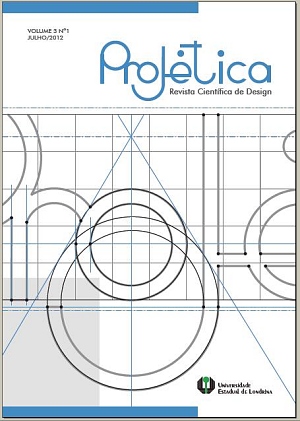Machining applied to Brazilian ornamental seeds: using design to make the biojewel sector more competitive
DOI:
https://doi.org/10.5433/2236-2207.2012v3n1p241Keywords:
, Ornamental seeds, Biojewel, Jewel design, MachiningAbstract
This paper presents the first results of the experimental stages of research for the entitled "Improvement of decorative finishing techniques in Brazilian seeds for competitiveness in the industry through the craft products with sustainable profile." This paper is part of research for the Masters of the Post-Graduate Program in Design of the University of the State Minas Gerais, and is in the line of Design, Materials, Technology and Processes. This research aims to show that by working with decorative finishes, or the so-called surface design, applied to the Brazilian seeds commonly used for the production of biojewels is an innovative action and can help to increase the competitiveness of the sector of handicraft with seeds. Thus, the main stages of the study for this paper, that even resulted into the production of an archiving of Brazilian seeds, were: references on literature, seed analysis, imaging, trial by machining, evaluation of the results and conclusion.
Downloads
References
BANDEIRA, Julio. Sementes ornamentais do Brasil. Rio de Janeiro: Reler, 2008.
BECKER, Bertha K. Amazônia: nova geografia, nova política regional e nova escala de ação. Amazônia Sustentável: desenvolvimento sustentável entre políticas públicas, estratégias inovadoras e experiências locais. Rio de Janeiro: Garamond; Tübinger, Alemanha: Geographischen Instituts de Universität Tübingen, 2005.
ESCOLA DE DESIGN. Centro de Estudos em design da Madeira. Disponível em: http://www.ed.uemg.br/atuacoes/centros/design-madeira> Acesso em: 26/04/2012
FEEVALE. Materioteca. Disponível em: http://materioteca.feevale.br:8080/webmaterioteca/-externo/index.jsp. Acesso em: 10/04/2012.
FELIX, Ana Angélica Alves. Identificação e desenvolvimento de técnica alternativa de controle de fungos em sementes utilizadas no artesanato. Universidade de Brasília, 2007. Disponível em: http://repositorio.bce.unb.br/bitstream/10482/3322/1/2007_AnaAngelicaAlvesFelix.PDF. Acesso em: 15/03/2012.
GOMES FILHO, João. Gestalt do objeto: sistema de leitura visual da forma. São Paulo: Escrituras Editora, 2000.
SEBRAE. Programa Sebrae de Artesanato. Termo de referência: março de 2004
Downloads
Published
How to Cite
Issue
Section
License
Copyright (c) 2021 Projetica

This work is licensed under a Creative Commons Attribution 4.0 International License.
Projética está licenciada sob a Creative Commons Attribution CC-BY 4.0 International. Os autores detém os direitos autorais e concedem à revista o direito de exclusividade de primeira publicação.
Os autores dos trabalhos aprovados autorizam Projética a, após a publicação, ceder seu conteúdo para reprodução em indexadores de conteúdo, bibliotecas virtuais e similares.
Os autores assumem que os textos submetidos à publicação são de sua criação original, responsabilizando-se inteiramente por seu conteúdo em caso de eventual impugnação por parte de terceiros. As opiniões emitidas pelos autores dos artigos são de sua exclusiva responsabilidade.
A revista se reserva o direito de efetuar, nos originais, alterações de ordem normativa, ortográfica e gramatical, com vistas a manter o padrão culto da língua e a credibilidade do veículo. Respeitará, no entanto, o estilo de escrever dos autores. Alterações, correções ou sugestões de ordem conceitual serão encaminhadas aos autores, quando necessário. Nesses casos, os artigos, depois de adequados, deverão ser submetidos a nova apreciação. As provas finais não serão encaminhadas aos autores.












